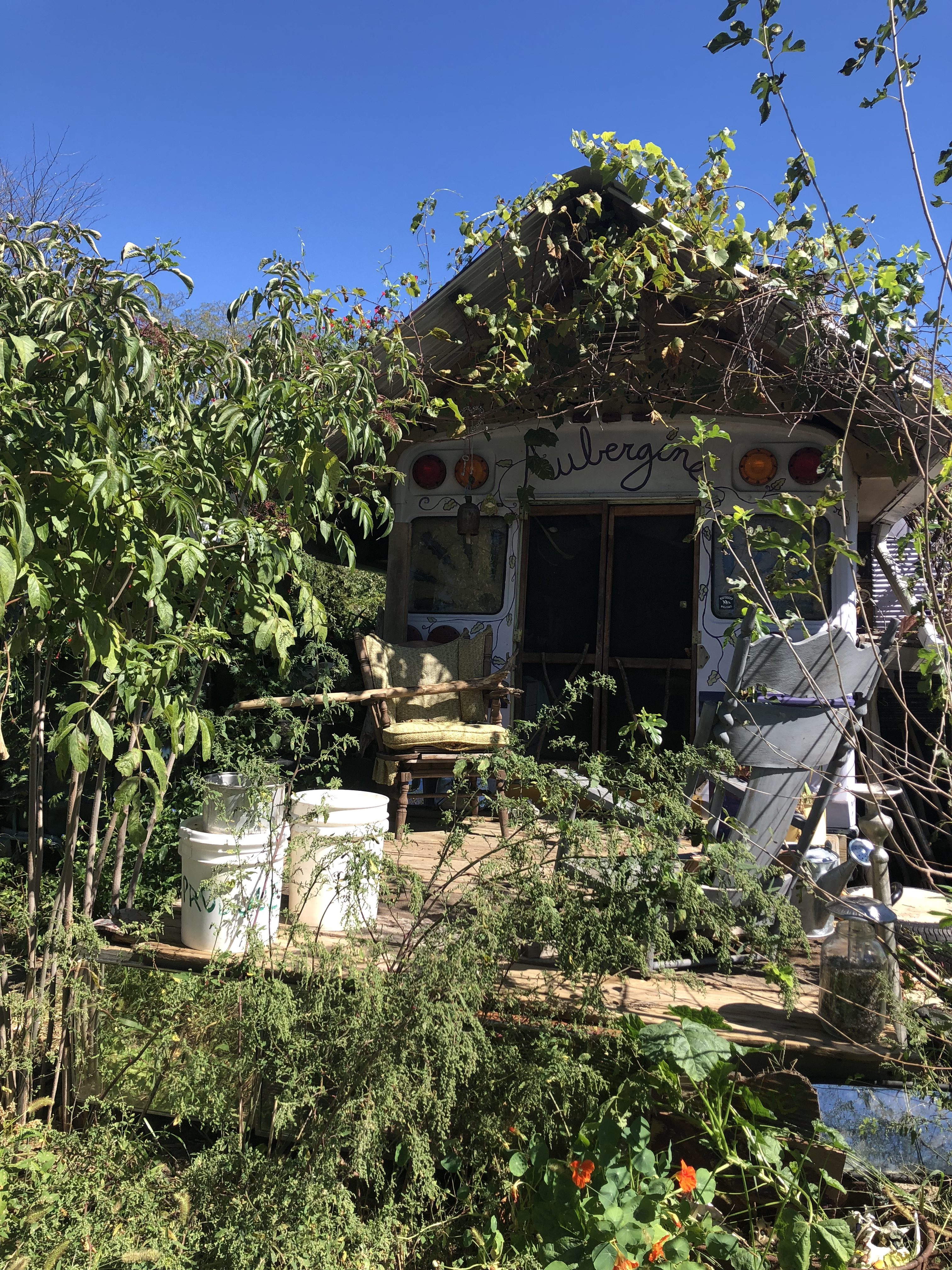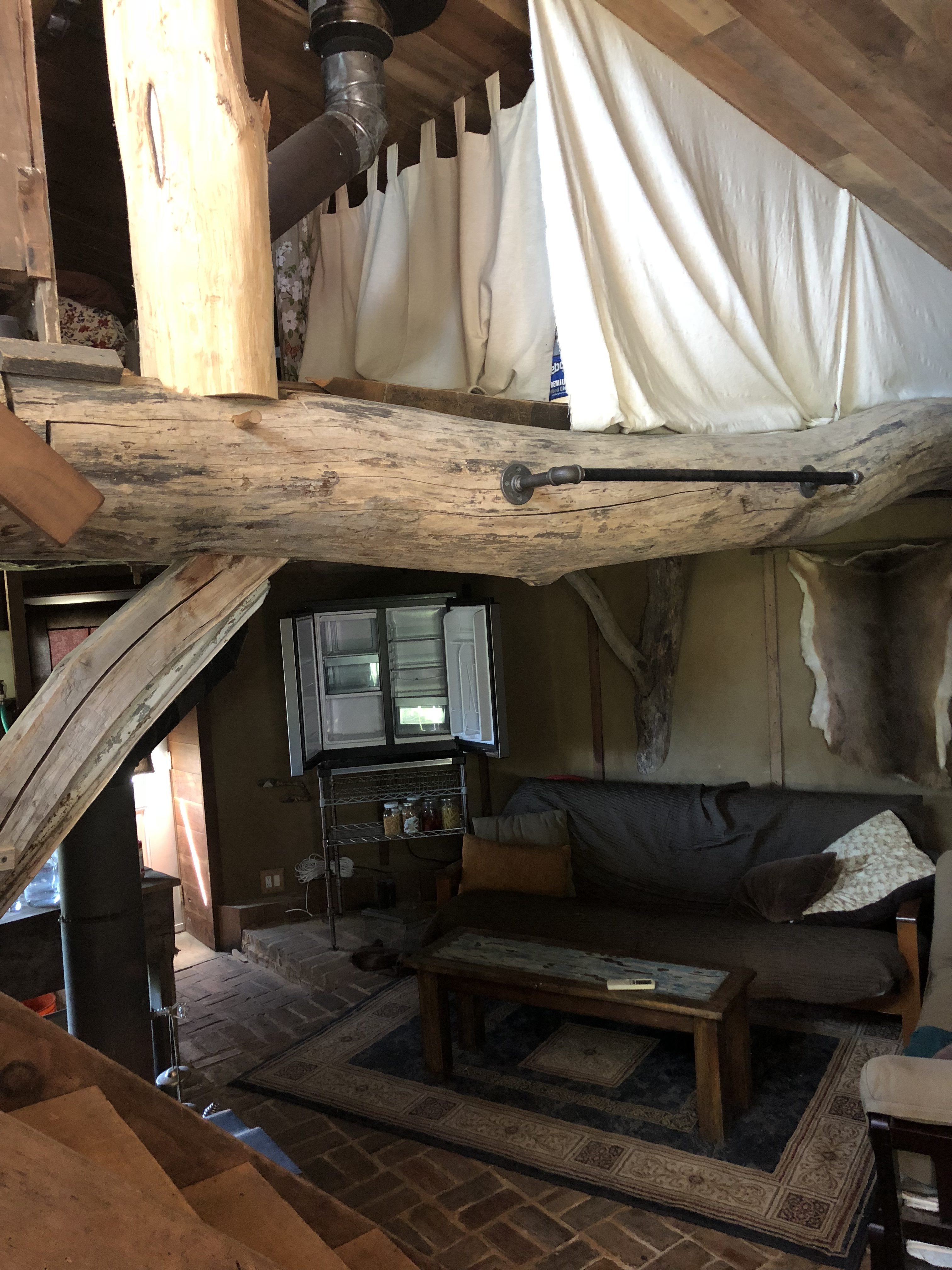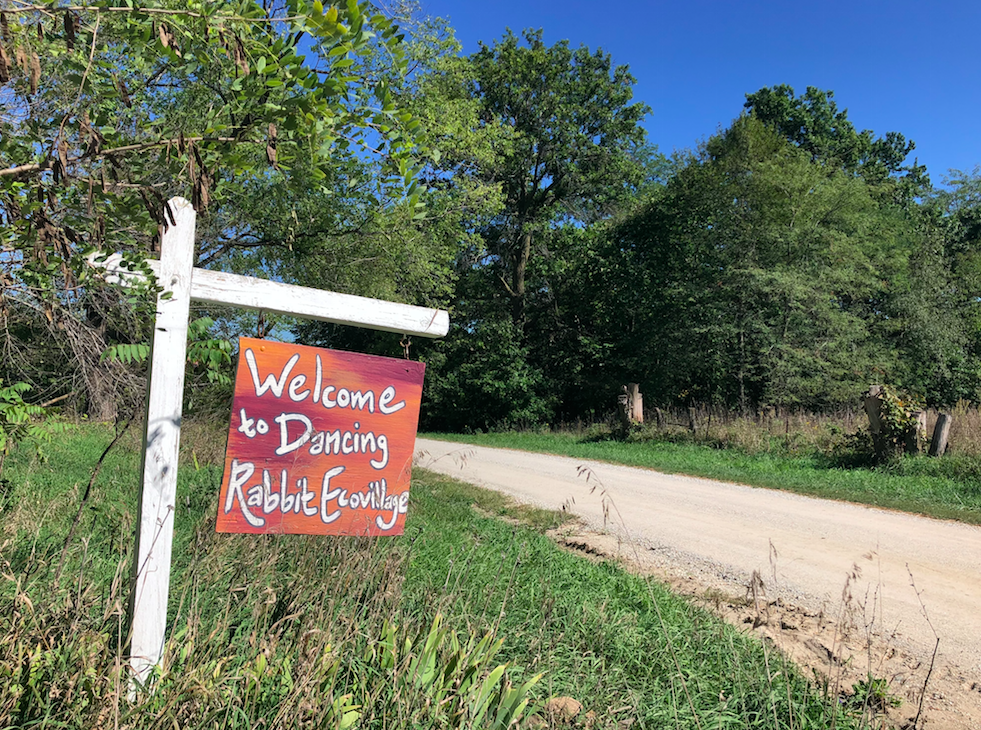Dancing Rabbit Ecovillage offers an alternative and more sustainable way of life
Written by Anna Mercer
“Take a right at Hy-Vee and drive until you hit a dirt road” are the directions I received when I called Dancing Rabbit Ecovillage to schedule a visit. Located near Rutledge, Missouri, about 45 minutes northeast of Kirksville, Dancing Rabbit defines itself as an intentional living community. Intentional communities are built on the simple idea that each member has chosen to live a sustainable lifestyle with the other members of the community.

Members of the community, who refer to themselves as Rabbits, live sustainably, striving to preserve the natural state of the earth. The Rabbits enjoy a life free from some burdens of the modern world, and enjoy living in a way that reduces the impact they have on the Earth.
Dancing Rabbit strives to be sustainable ‒‒ it is an ecovillage after all. The existence of this abnormal community depends heavily on trust — from their unmanned grocery store to the amount of possessions members share in common, trust is an essential part of life at Dancing Rabbit. Members co-own anything from lawn mowers to outhouses, in an effort to be economically sustainable and financially prudent. Each member must complete a screening before they are allowed to move to the village, which includes them disclosing information about where their income will come from and why they’ve decided a sustainable community best fits their lifestyle.
https://www.youtube.com/watch?v=1WJMnaJ-WNU
The discussion of alternative lifestyles leads to the common misconception that Dancing Rabbit is a commune or cult. While there are several important differences between an intentional community and a commune or cult, the easiest way to recognize the difference is the emphasis on diversity. Members at Dancing Rabbit range from schoolteachers to firefighters to farmers to midwives, and have a wide variety of religious and social beliefs. Cults often require participants to conform to a leader’s ideals, and that is exactly what Dancing Rabbit works to avoid. Members do not share income — as members of a commune would — but instead, contribute a percentage of their income toward the upkeep of common buildings. These community-owned buildings range from the Dancing Rabbit mercantile and inn to their catch-all community building, where Rabbits can do laundry, collect mail, attend classes and hold meetings.

Being sustainable and intentional is a lofty goal — but what does this look like in the day to day lives of people in the ecovillage? Some people assume that life in the middle of nowhere must be boring, but members of Dancing Rabbit enjoy hosting live music and performances in their studio space. This common space is used for all forms of entertainment and doubles as a gym and yoga studio. During the summer, swimming in the lake adjacent to Dancing Rabbit Ecovillage is a favorite pastime for adults and children. Dancing Rabbit is reminiscent of small- town America. Children make their own fun out of whatever is available to them, and it is common to know almost everything about each member of the community.

The tight-knit, trust-dependent community works toward a central goal — a reduction of their collective carbon footprint. One way that Dancing Rabbit reduces this is through vehicle sharing. Many members of the community own bikes, but they also share several fuel-efficient vehicles for longer trips. On average, a member of the Ecovillage drives 911 miles per year, compared with the 6500 miles the average American drives. Additionally, some members alter their diets in order to preserve resources. Thomas, whose last name the ecovillage would not disclose due to their strict no last names policy, is a Rabbit who serves as a tour guide and eats a vegan diet because of the excessive resources required for the production of meat.
“Some Rabbits grow their own vegetables, and everyone composts their kitchen scraps to make fertilizer for crops,” Thomas said. “I chose to remove animal products from my diet because of the greater amount of land and water required for meat calories compared to plant calories.”
The impact of vehicle sharing and alternative eating is noticeable. Brooke Jones, a student at the University of North Texas, performed her master’s thesis research at Dancing Rabbit Ecovillage. After measuring and comparing Dancing Rabbit’s carbon footprint with the rest of America, Jones’ report concluded, “the average Rabbit has a carbon footprint that is 53 percent less than the average American.”
This data shows that the sustainable solutions that Dancing Rabbit Ecovillage has implemented are making an impact. If other communities adopted a few of the principles the Rabbits follow, the reports would likely begin to extend our liveable years on Earth. Many people don’t know that such a community exists less than an hour from Kirksville, but a few have experienced a taste of the Ecovillage.

Brandon Bethel, a graduate accounting student at Truman State University, attended one of the Thursday pizza nights that Dancing Rabbit hosts at their restaurant, the Milkweed Mercantile. Bethel first learned about the Ecovillage through a faculty member at Truman and chose to explore it with some friends.
“People there were super welcoming and enjoyed teaching people about what the community stands for and their individual backgrounds,” Bethel said. “They also have a great bar and homemade food. I would highly recommend students to go. It is a little outside of some people’s comfort zone, but completely worth the experience.”
There are many ways to get involved with Dancing Rabbit Ecovillage. Anyone can schedule a visit or attend one of their open visit days on the second and fourth Saturdays of the month, April through October. If someone isn’t ready to commit to the full Dancing Rabbit experience, they can visit their website which has videos and more information about the day to day activities of the Rabbits.
If you’d like to hear Anna talk about her experience writing this story listen to her on our podcast!
